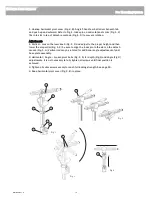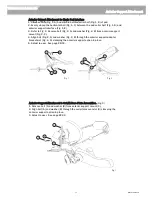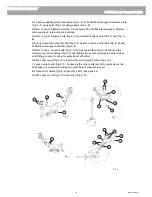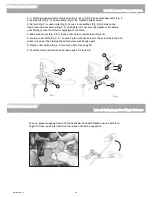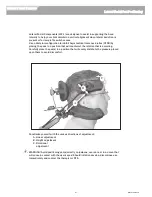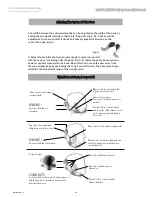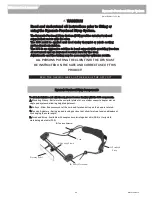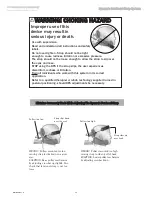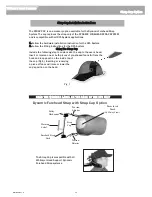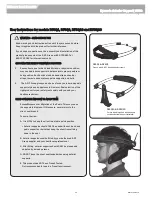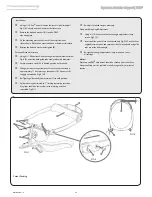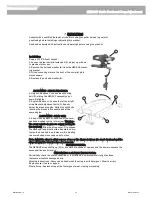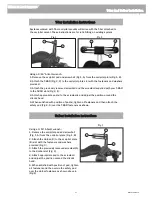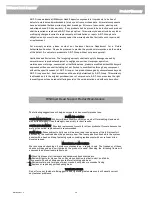
The width between the sub-occipital pads can be adjusted to the width of the neck by
sliding the screwballs laterally in their slots. (Page 24, Fig. 2, B). Pads should be
adjusted so that even contact is made and primary support is provided on the
rear of the pads (Fig. 4).
Edge of sub-occipital pad tak-
ing too much pressure.
Poor ear clearance.
Pressure at mastoid process is
painful.
Flared “tab” of sub-occipital
pad too high. May allow user to
get head caught around edge
of system.
Poor contact with upper
occipital pad.
WRONG!
System tilted too far
rearward.
WRONG!
System tilted too far forward.
Poor contact with sub-occipital pads.
Flared “tab” of sub-occipital pad too
low. May be against shoulder caus-
ing discomfort.
Top edge of occipital pad
taking too much pressure.
Better distribution of forces.
Ear and mastoid process
clearance.
Flared “tab” of sub-occipital
above shoulder.
X-ray of system
CORRECT!
System tilted at angle which allows upper
and lower pads to provide a more evenly
distribute pressure.
Adjusting The System To The User
What To Look For In A Correct Fit
Whitmyer Head Supports
S.O.F.T. (Multi-Pad) System Adjustment
MKT6100 Rev. C
28
6. Adjust the occipital pad forward just enough to come into contact
with the occiput. Loosening bolts (Page 24, Fig. 2, E) allows the padto be moved up or
down for optimal contact with the head. Be careful not to move the user away from
the sub-occipital pads by positioning the occipit too far forward. The base plate angle
will affect the adjustment range of the occipital pad.
Fig. 4

